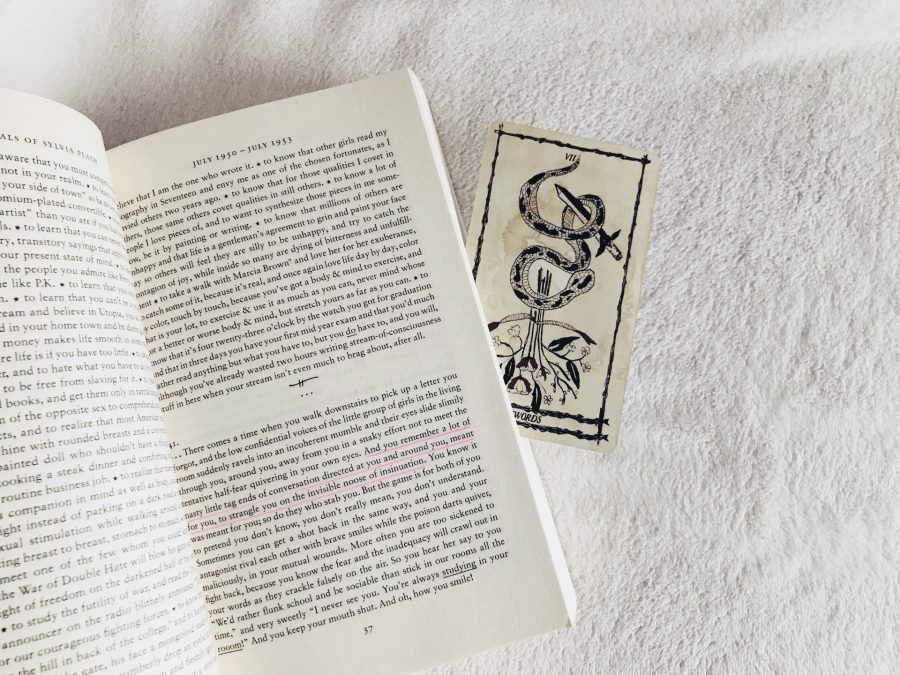For me, tarot (and oracle) is a mirror that reflects things that I may have forgotten or don't want to accept. It's a method of soul study. But I also enjoy breaking the mold and finding other uses for it. Just like yoga, gardening, or chanting, tarot is simply another tool in my toolkit and a really fun hobby! Today, I am sharing some of the decks and journaling practices that currently keep me busy and entertained.
1) Exploring geospirituality
“Geospirituality” is a practice that I invented for myself. In its simplest form, it’s a combination of travelling, journaling, reading, and card reading. It’s a way for me to make sense of my place on Earth and to dive into questions of identity, addiction, purpose, etc. Most recently, I was exploring Avalon/Glastonbury with Jean Shinoda Bolen’s Crossing to Avalon (HarperOne, 2004). To be honest, I thought this book was going to be a travel memoir of sorts, but it was actually an encounter with the Goddess.
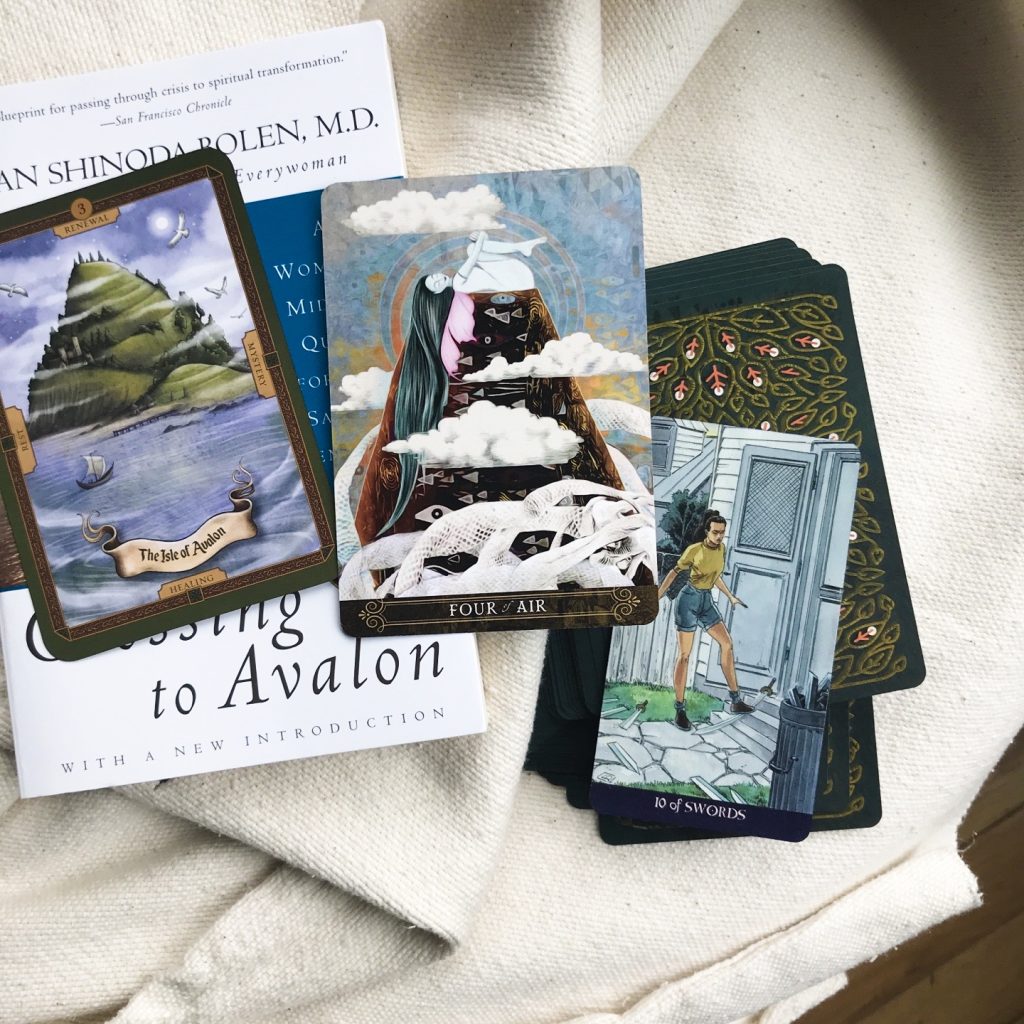
There are some really beautiful and poignant passages on pregnancy and childbirth. I also enjoyed reading about Psyche and the Handless Maiden and recognized myself as an Athena whose quest to become a mother has led her down the “medical infertility maze” (Bolen 2004, p. 139). There are many more archetypes and topics that Bolen muses over and I could’ve journaled about every single passage I encountered (and I still do from time to time!). Usually for this type of work, I select some decks that speak to the theme of the place I am exploring. In this case, I chose the Pagan Tarot as my significator deck (I have my own interpretations of the cards and rarely use the book) in addition to the Mists of Avalon Oracle. It is said that beneath Glastonbury Tor is the entrance to Annwyn, the Otherworld where the Fae reside. For this reason, I also introduced the Förhäxa Tarot into this work. An important concept in Bolen’s book is this idea of a labyrinthine path, the cyclical nature of our meandering through life experiences. It’s led me to read Pam England’s Labyrinth of Birth (Birthing From Within Books, 2010).
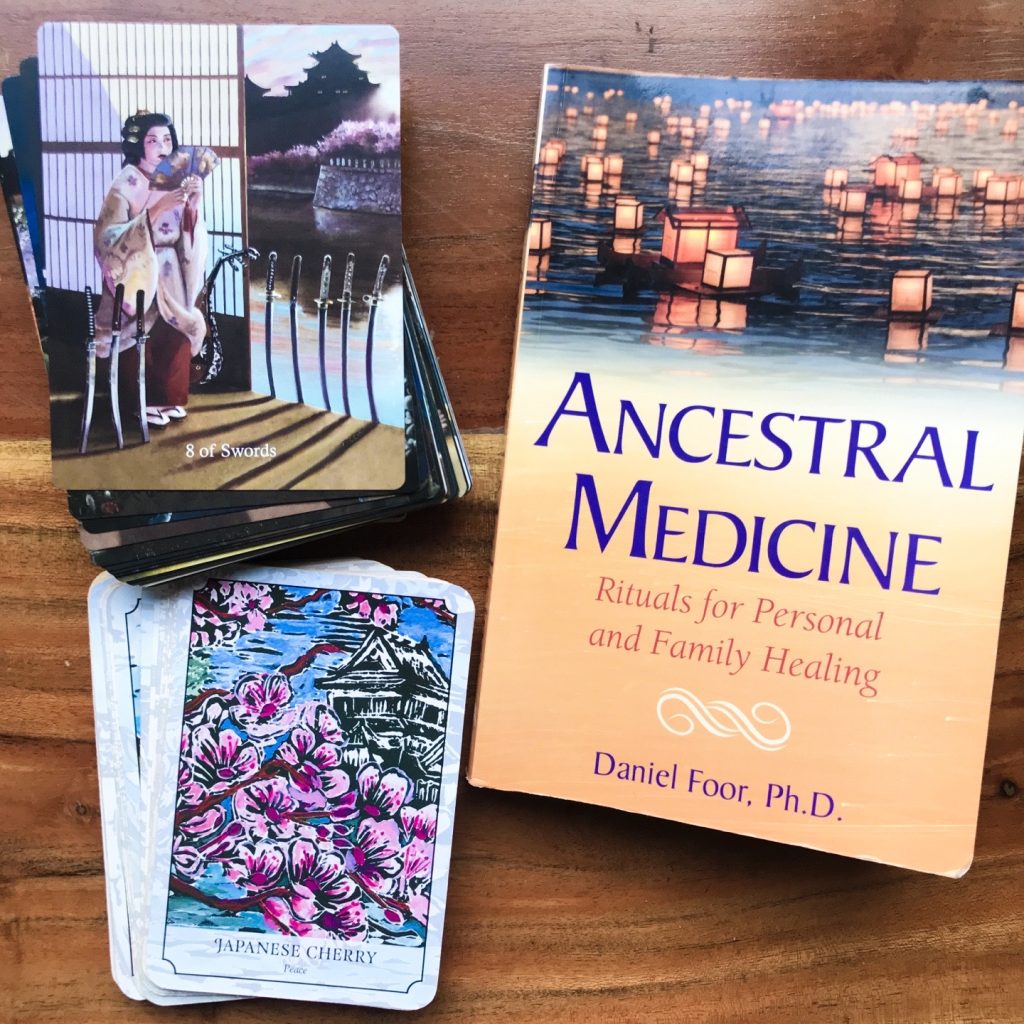
2) Dipping my toes into ancestral work
Not too long ago I participated in a past-life regression session for the very first time. More specifically, this was a session of Beyond Quantum Healing (BQH) and it was absolutely fascinating. I didn’t quite know what to expect and it was by far the most ‘woo’ thing I’ve attempted. My purpose in doing this was to explore some past karmic ties in relation to fertility. Many of the images that came up for me were scenes of Japan from the feudal period.
I don’t know that I necessarily have any ties to this culture, though I had quite an obsession with it when I was younger, which led me to travel there and even learn Japanese for some time. After this session however I thought long and hard about these scenes and was reminded of a particular tarot deck that contains imagery of feudal Japan, the Ancestral Tarot Path. It was such a delightful plot development. Although I’ve seen this deck many times before and liked the images, I never considered it. To be honest, back then I didn’t know what I could do with it. But since I wanted to get more clarity on what I saw during my session, I decided to give this deck a try. I read this deck intuitively and focus mainly on what I see in the images. It’s become an excavation of past lives layered with personal healing and ancestral work. When I want more structure to this practice, I consult Daniel Foor’s book on Ancestral Medicine (Bear Company, 2017) to guide the readings. Very occasionally, I include the Flower Reading Cards. There are other decks by Cheralyn Darcey that could work, but I prefer this one specifically because the sacred sites are in black & white which makes the art less busy.
3) Setting an intention for my yoga practice
When I first started yoga many moons ago, I read yoga blogs and quite a few of them suggested keeping a yoga journal. Maybe I just didn’t get it and journaled wrong, but it turned out to be the most boring practice I’ve ever tried. I didn’t really understand the purpose of keeping a log of my asana progress. “Today, I tried bakasana for the very first time!” Hmm.. that’s it? Even writing about pranayama or meditation wasn’t doing it for me. I actually started and abandoned this journal idea many, many times.
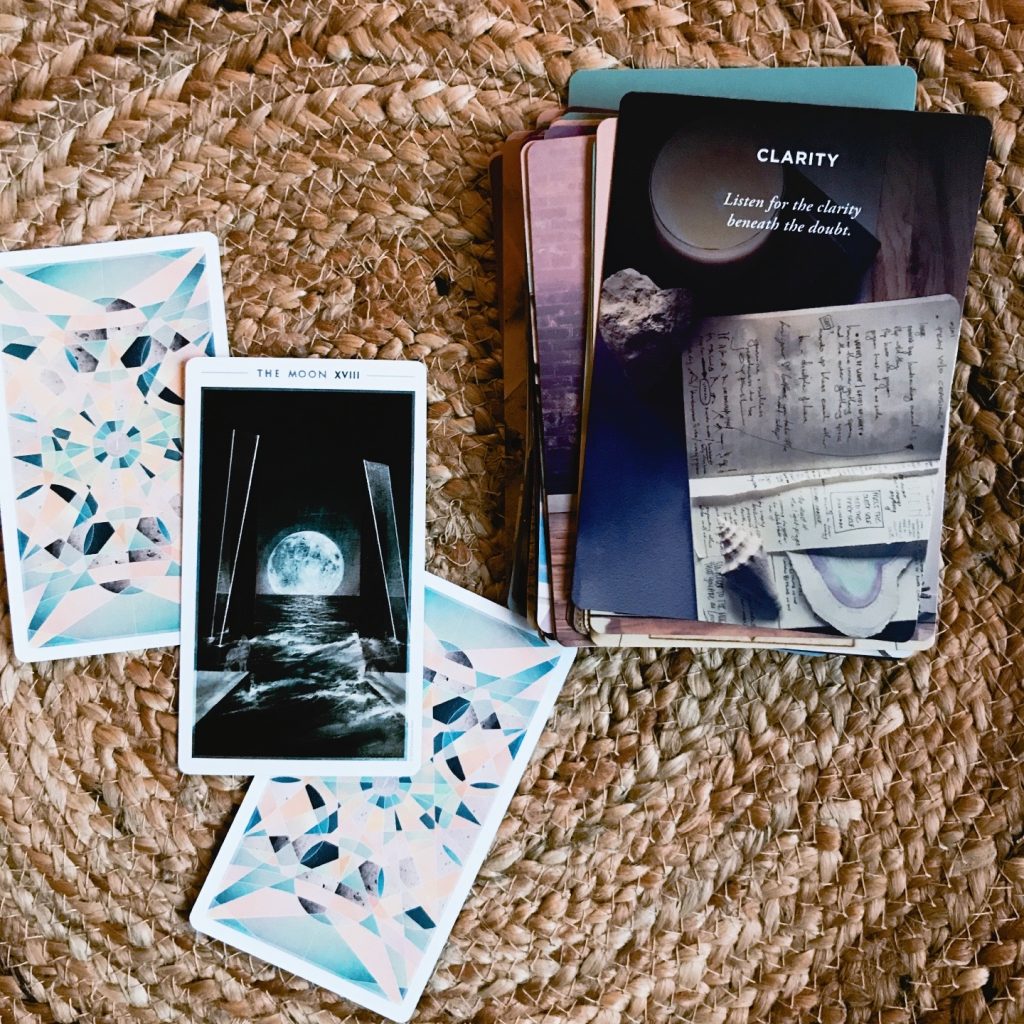
It wasn’t until I began integrating tarot into the mix that things started to make more sense. The decks I like to use to set weekly intentions for my time on the mat are the Fountain Tarot and the Art of Attention cards. I love the “airy” atmosphere of this tarot deck because it takes me right away into a state of quietude and introspection. I also enjoy the keywords of the oracle deck (the affirmations and photos come from the Art of Attention book). There are various decks I use for yoga, including those decks with instructions on how to do a certain pose. Sometimes I blend those into this intention-setting practice. But usually I stick to these two decks. I like the energy they create together and the themes they evoke.
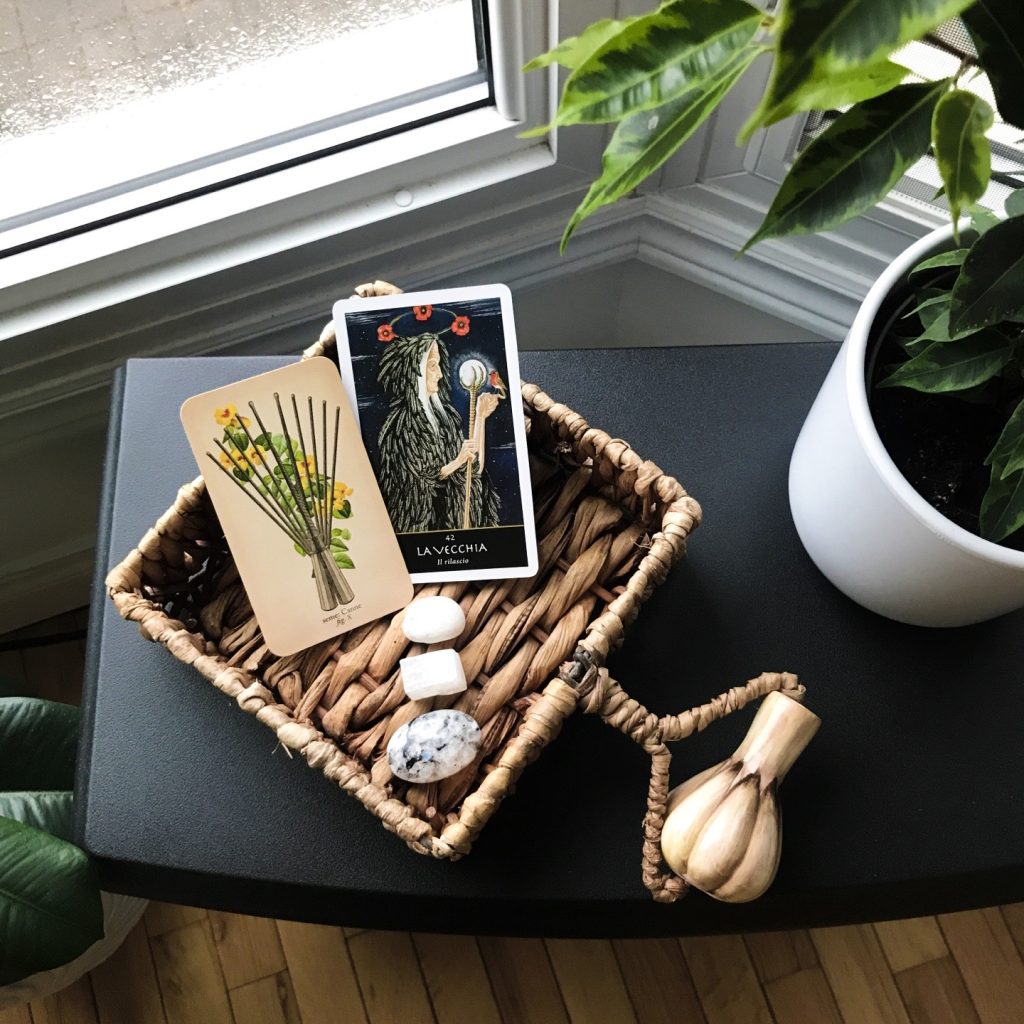
4) Leggere i tarocchi per imparare l’italiano
When I was 19, I decided to learn Italian. The circumstances of this story are rather prosaic. But in a nutshell since I was already fluent in French, it was quite easy for me to pick up another Romance language. During those three semesters, I achieved a really high level of proficiency, even reading an entire book by Niccolò Ammaniti fully in italiano. But once I finished the program, I never used the language again and lost a lot of it. Recently I decided that I wanted to become fluent, for no particular reason, really.
To do this I incorporate Italian into my tarot practice, as part of a comprehensible input program I’ve developed for myself. The two decks that I am using for daily pulls are the Antique Anatomy Tarot and The Witches’ Oracle, both in the Italian edition. Unlike what we can find on the French market, very few decks are translated into Italian (in fact, I found more in Spanish). And when they are, the formatting sometimes changes. These were the two decks that I liked the most and would probably have ended up acquiring in English at some point. I don’t know that they jive together aesthetically, but they complement each other really well in their message. Essentially I draw one oracle and one tarot card every morning. Then I read both guidebooks and write down the passages that I find relevant. At the end, I scribble a few sentences to form my own take-away message for the day. All in Italian *gasp* and it only takes a few minutes!
5) Improving my journal entries
You could say I discovered the Journals of Sylvia Plath (Faber Faber, 2014) purely by chance. I don’t read a lot of classics but I may have read a poem or two by Plath in one of my Lit courses. Nevertheless, she was not an author that stood out in my mind. But when this publication was suggested, I thought, How interesting would it be to read a famous author’s journals? Quite interesting in fact.

Actually, this caught my attention because someone had left a review saying Plath expressed virulent opinions regarding her mother, which shocked them. Naturally I was intrigued. In truth, her journals are way more than that. She had some really profound things to say and her writing-journaling style is very diverse. It ranges from poetic prose to storytelling to full-on poetry with many variations in between. I don’t consider myself a writer but as a journaler I’m always looking to journal better and this practice is so much fun. There is no formal structure, I simply read and read and read (it’s a huge book). And then, when I feel inspired to mimic her style, I try to journal about everyday events. My entries are so much better! Sometimes I draw cards from a Leila + Olive deck to set the mood as they also contain a lot of poetry. The Ophidia Rosa Tarot is the deck I’m currently using but they’re all excellent.
🌑 ♑
Decks featured:
Mists of Avalon Oracle (Rose Inserra, Nadia Turner)
Förhäxa Tarot (MJ Cullinane)
Pagan Tarot (Gina M. Pace, Luca Raimondo)
Ancestral Path Tarot (Julie Cuccia-Watts)
Flower Reading Cards: Discover the Language of Nature (Cheralyn Darcey)
Fountain Tarot (Jason Gruhl, Andi Todaro, Jonathan Saiz)
Art of Attention: Yoga Healing Cards (Elena Brower, Erica Jago)
I Tarocchi anatomici antichi published as L’arte moderna dei tarocchi (Claire Goodchild)
Le carte della strega (Sally Morningstar, Danuta Mayer)
Ophidia Rosa Tarot (Leila + Olive)
